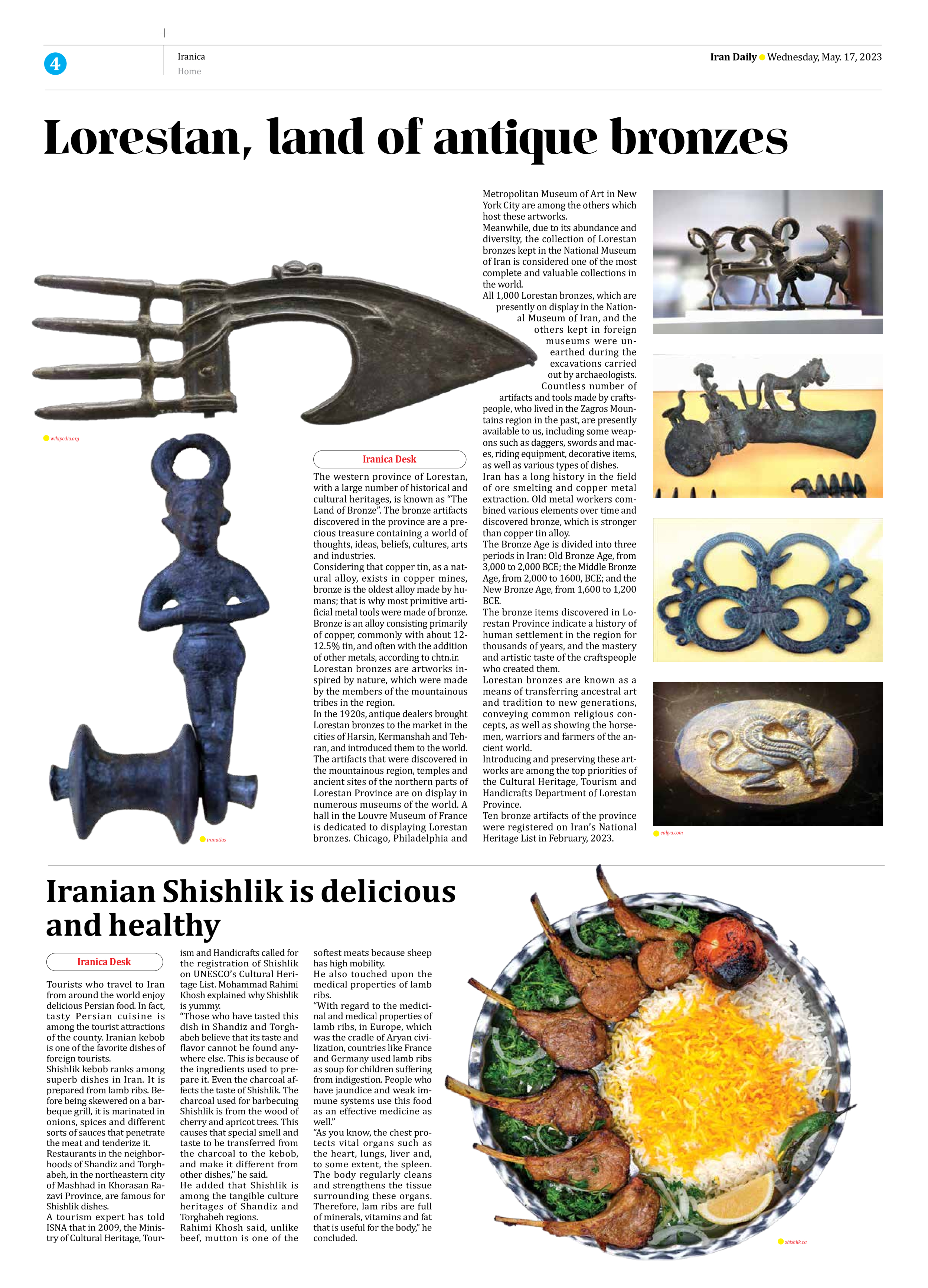
Lorestan, land of antique bronzes
The western province of Lorestan, with a large number of historical and cultural heritages, is known as “The Land of Bronze”. The bronze artifacts discovered in the province are a precious treasure containing a world of thoughts, ideas, beliefs, cultures, arts and industries.
Considering that copper tin, as a natural alloy, exists in copper mines, bronze is the oldest alloy made by humans; that is why most primitive artificial metal tools were made of bronze.
Bronze is an alloy consisting primarily of copper, commonly with about 12-12.5% tin, and often with the addition of other metals, according to chtn.ir.
Lorestan bronzes are artworks inspired by nature, which were made by the members of the mountainous tribes in the region.
In the 1920s, antique dealers brought Lorestan bronzes to the market in the cities of Harsin, Kermanshah and Tehran, and introduced them to the world.
The artifacts that were discovered in the mountainous region, temples and ancient sites of the northern parts of Lorestan Province are on display in numerous museums of the world. A hall in the Louvre Museum of France is dedicated to displaying Lorestan bronzes. Chicago, Philadelphia and Metropolitan Museum of Art in New York City are among the others which host these artworks.
Meanwhile, due to its abundance and diversity, the collection of Lorestan bronzes kept in the National Museum of Iran is considered one of the most complete and valuable collections in the world.
All 1,000 Lorestan bronzes, which are presently on display in the National Museum of Iran, and the others kept in foreign museums were unearthed during the excavations carried out by archaeologists.
Countless number of artifacts and tools made by craftspeople, who lived in the Zagros Mountains region in the past, are presently available to us, including some weapons such as daggers, swords and maces, riding equipment, decorative items, as well as various types of dishes.
Iran has a long history in the field of ore smelting and copper metal extraction. Old metal workers combined various elements over time and discovered bronze, which is stronger than copper tin alloy.
The Bronze Age is divided into three periods in Iran: Old Bronze Age, from 3,000 to 2,000 BCE; the Middle Bronze Age, from 2,000 to 1600, BCE; and the New Bronze Age, from 1,600 to 1,200 BCE.
The bronze items discovered in Lorestan Province indicate a history of human settlement in the region for thousands of years, and the mastery and artistic taste of the craftspeople who created them.
Lorestan bronzes are known as a means of transferring ancestral art and tradition to new generations, conveying common religious concepts, as well as showing the horsemen, warriors and farmers of the ancient world.
Introducing and preserving these artworks are among the top priorities of the Cultural Heritage, Tourism and Handicrafts Department of Lorestan Province.
Ten bronze artifacts of the province were registered on Iran’s National Heritage List in February, 2023.







